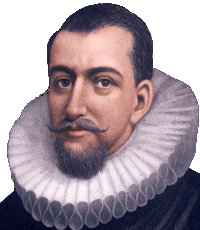Trading with Asia was a lucrative business but also a risky one. It was a long journey to India and back and any number of things could happen on the way. In order to pool the risks, merchants would at first only invest in a portion of a ship. Their portions came to be known as “shares.” Later they invested not in individual ships but in the businesses which organized the shipping. This is how the first “joint stock companies” came to be established. This is the origin of the first business corporations.
Another way to deal with risk was to ask for a monopoly on the trade with a particular part of the world. European kings were happy to sell such monopolies as a way to raise revenue. This is how “East India companies” came to be established in one country after another – of which the English East India Company, 1600, and the Dutch Vereenigde Oostindische Compagni, VOC, 1602, were the most famous. The rulers were also quick to borrow money from the companies once they had begun making their profits.
Yet it was more than anything the VOC that ruled the waves. The Vereenigde Oostindische Compagni was buying tea and porcelain in China, established trading ports all over Asia and a full-fledged colony in today’s Indonesia. At the Beurs, the stock exchange, in Amsterdam not only VOC shares could be bought but all kinds of other shares too. The Amsterdam Beurs was a veritable one-stop-shop for financial services. You could buy maritime insurance, organize bank transfers, cash checks and trade currencies. “Dutch finance” is the origin of today’s financial service industry.
Dutch traders are also the ones who came up with many of the place names we today find on a world map. Zeeland is a Dutch province and that is why two islands west of Australia came to be known as “New Zealand.” Australia itself was for a long time known as “New Holland” and New York called “New Amsterdam.” In fact, Harlem is a Dutch city and not only a part of Manhattan – although the Dutch spelled it “Haarlem.” In the nineteenth-century, Chinese laborers came to work in “the Dutch West Indies.” That is why there to this day are people in the Carribean who speak both Chinese and Dutch.
External links:
- “Amitav Ghosh’s Ibis trilogy: The story so far”
- Atlas of Mutual Heritage
- British Library, “East India Company”
- De VOC Site
- H.V. Bowen, “The Business of Empire”
- Karl Marx, “The East India Company — Its History and Results,” 1853
- Rijksmuseum.nl, “1595-1616 The route to the Indies”
- Rijksmuseum.nl, “1602 Trade with the East: VOC”
- Rijksmuseum.nl, “1623 Trade with the West: WIC”
- The Dutch East India Company’s shipping between the Netherlands and Asia 1595-1795
- Thomas Crump, ” The Dutch East Indies Company – the first 100 years”
- VOC Historical Society


